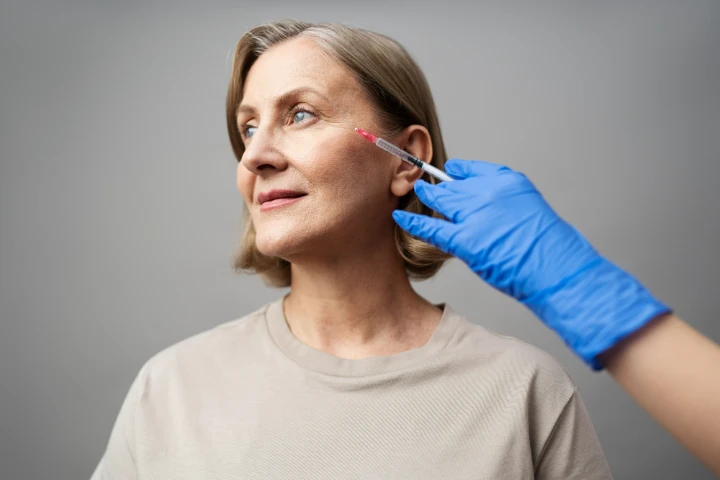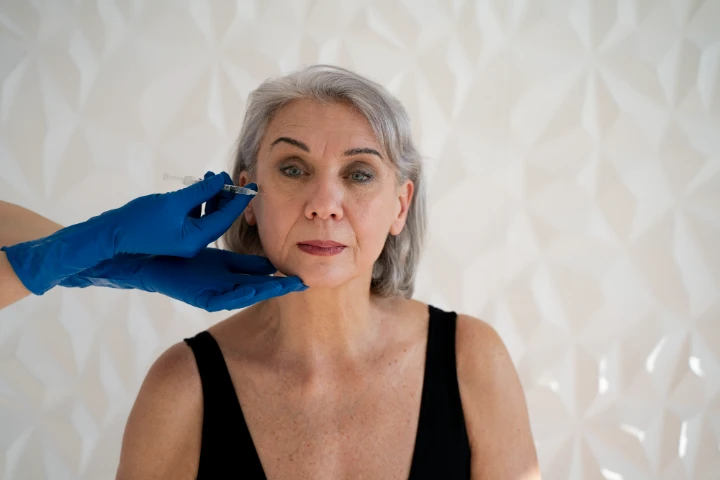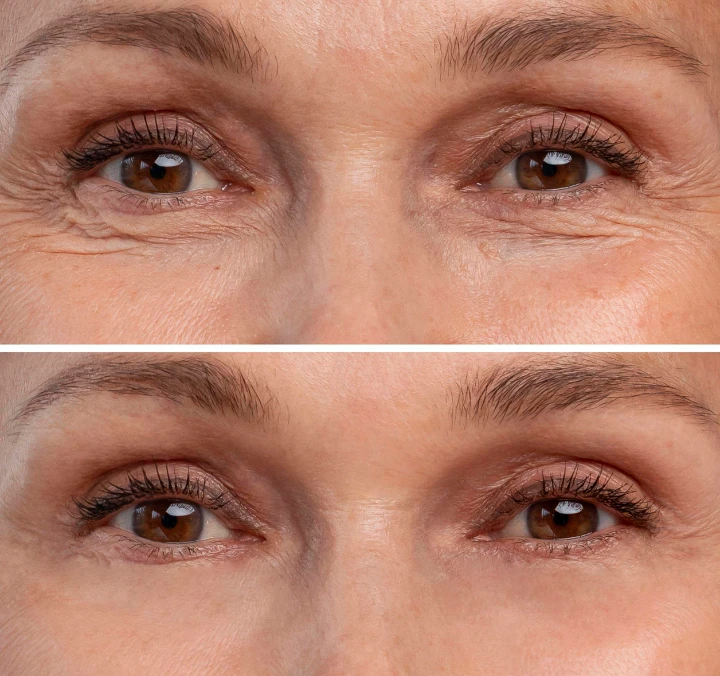How Often Should You Get Botox in Your 50s? A Comprehensive Guide
How often should you get Botox in your 50s Turning 50 is a milestone that brings with it a wealth of experience, wisdom, and yes a few more wrinkles. This is a time of life where many women reflect on their journey and achievements, and look forward to the future with a renewed sense of purpose and confidence. If you’re a 50+ woman and a health and beauty enthusiast, you might be considering Botox to maintain a youthful appearance.

Botox can help smooth out fine lines and wrinkles, giving you a rejuvenated look that matches how young you feel inside. But how often should you get Botox in your 50s? This guide delves into the intricacies of Botox treatments for women in their 50s.
Covering everything from how the procedure works, the benefits and risks, to the recommended frequency of treatments. We aim to answer all your pressing questions to help you make an informed decision that aligns with your beauty goals and personal preferences.
How Often Should You Get Botox in Your 50s?
Botox is an effective non-surgical cosmetic procedure that helps to reduce existing wrinkles and prevent new ones, as it paralyzes the muscles due to which the skin in these areas folds. However, the duration of their action is different for all patients, and it can depend on the condition of the skin and the aging process due to human individuality. Thus, there are no specific recommendations, and the patient should apply treatments as needed.

General Guidelines
Most women in their 50s will need to have Botox shots every 3-4 months. This duration allows Botox to work until it smoothens and grows nicely or quickly, as the case may be for muscle activity. Your skin’s elasticity declines as you get older, and traces might deepen due to sun exposure, inheritance, and patterns like smoking and alcohol. Consequently, regular treatments make your skin appear firmer and firmer, staving wrinkles off.
Tailoring Your Treatment
Therefore, it is critical to talk to your qualified healthcare provider to customize the Botox injections’ frequency. Your type of skin, lifestyle, and the target areas may significantly determine how often you should have Botox. Specifically, if one has more sun damage or his or her lines are deeper, this individual will need repeated treatments. People who are very expressive or participate in activities that involve a considerable amount of neck movements may realize that Botox wears off faster.
As a result of the skin examination, aesthetic goals, and a personalized treatment plan will be developed by your healthcare provider. With this one-of-a-kind skin-conserving design, you may assure not just the top results from Botox but also show attention-provoking results with a fresh and natural look. Botox should not just smooth wrinkles but should result in a better version of yourself feeling fresh and filled with t newfound confidence.
How Often Do You Get Botox?
Even though the general guideline implies treatments every 3 to 4 months, some women may feel like Botox works for them in a shorter or extended period. It can be affected by age, skin type, and individual response to the treatment. Here is what you need to know:

Initial Treatments
During the initial period of Botox, more treatments might be recommended for the first few weeks or a few months. The primary purpose of such a schedule is to periodically let the muscles relax and reduce the wrinkling impact. It is critical to adhere to your practitioner’s suggestion for this phase because the results will be maximized, and any adverse effect can be avoided. Your practitioner will then review your treatment and adjust as needed and requested.
Maintenance Phase
If you are pleased with your results, you can proceed to a maintenance phase. The frequency of your treatments may be reduced to every 4 to 6 months if your skin responds well to Botox. Comprehensive maintenance extends the life and appearance during wrinkles-free days which means you retain the young and youthful look. Additionally, it provides an opportunity to inquire about any modifications in your skincare routine or lifestyle due to diet or other variables that could impact the treatment duration. Your practitioner will still examine your skin’s reaction and make sure everything is in order in making adjustments to enhance your outcomes.
How Often Can You Get Botox?
Finally, the question of how often do you get Botox is essential to maintain the balance between retaining efficacy and ensuring safety. The procedure is popular among those who seek cosmetic intervention to reduce fine lines and wrinkles by temporarily demobilizing the targeted muscles.

Maximum Frequency
Most doctors do not recommend having another Botox session till three months after the first treatment. This time frame is critical in ensuring that your muscles are not overexposed to the neurotoxin. Thus it is less likely that you will develop resistance or adverse reactions.
Assessing Longevity
Typically, one Botox session can last for 3-6 months. Several factors determine how long the effect of each treatment will endure, such as your metabolic processes, activity levels, the area treated, and more. High-metabolism people are the most likely to be unhappy with the results, as they will disappear very quickly. The same is true for the areas with constant movements, especially the forehead. Regular visits to your healthcare provider will help you adjust your Botox treatment to you, allowing you to maintain perfect results throughout the treatment course.
How Long Between Botox Treatments?
Knowing the optimal period between Botox treatments can minimize planning and maintaining the look you desire.
Standard Intervals
Most people use 3 to 4 months between treatments as the standard interval. This approach facilitates keeping the desired effect without the risk of excessive consumption, allowing the muscles to recover activity gradually and keeping the natural appearance.
Adjusting Based on Results
If you notice that the effects of the treatment wear off quicker than expected, you might have to schedule appointments at a shorter interval that can range from 2 to 3 months. On the other hand, if your face looks youthful for a relatively longer time after the treatment, consider scheduling the sessions further apart, spanning from 5 to 6 months. Monitoring your body and how long it takes to produce variable results helps avoid overdoing the procedure. Regular visits to the doctor help gauge the perfect timing that works for one’s body.
How Old Do You Have to Be for Botox?
Botox is often associated with women in their 50s, but you are probably curious about how old is old enough. It is always best to learn when is the right time to start Botox in order to have the aesthetic results you seek.
FDA Guidelines
According to the FDA, Botox is suitable for anyone over the age of 18, which does not mean that you have to get your first injection at that age. The appropriate age will depend on a few different factors, such as your skin type, exposure to the elements, and your genetic stockpiling, which makes it hard to fit it into a clear-cut CATEGORY.
Preventative vs. Corrective
Secondly, women also start the use Botox in their 30s or 40s to take the fine lines away before they firm into wrinkles due to age. This process helps one keep a younger look for such a long time in their life. On the contrary, one can opt to do Botox in their 50s to keep rid of wider and deeper lines and wrinkles.
Consulting a Professional
Be sure to consult a qualified provider to learn about the optimal time to begin Botox. At a consultation, a provider can evaluate the current state of your skin, understand your aesthetic objectives, and devise a custom plan that is just for you.
This level of care is critical for attaining the greatest possible outcomes from your Botox treatments while still appearing truly organic and natural. Ultimately, the choice of when to start Botox is entirely up to you, but a professional’s opinion will help you in making a more thoughtful decision.
Do You Need Less Botox Over Time?
It is common for Botox users to wonder if they will need Botox injections less frequently as time goes on. This question is not easy to answer and requires an examination of the way Botox functions and how the body reacts to it for long periods to respond.
Building Effectiveness
In the long run, the constant target muscles Botox may become weaker, meaning they may move with less force or less often. This decrease in muscle activity is possible because the muscles are being used less, which reduces the activity. Overall, as a result, you may require fewer Botox units to achieve the same results. This is another factor that may contribute to the long-term preservation of a young appearance.
Maintenance and Gradual Reduction
As you keep up with treatments and your muscles get used to them, you may notice the time between treatments lengthening. At first, you will need to have your Botox treatments every three to four months. Over time, however, as your treatments become a regular part of your schedule, some people find that they can wait longer to stay out of a doctor’s office perhaps every six months. And the amount of Botox you need? May go down, too.
Just like how you can wait longer in between treatments, you can also use less product. This is true because the muscles that cause these lines have adapted to the treatment and require less of the product to get the job done. However, this is not a standard phenomenon everyone is different, affected by age and skin, how you live and take care of yourself.
Although it may be needed less and its effects could become more effective after some time, in most cases, the best outcomes can be achieved and long-lasting with the help of frequent treatments designed using an individual schedule. Therefore, it is vital to consult a specialist to get the best approach.
Conclusion
In summary, Botox can keep you looking young in your 50s. The solution works by paralyzing the muscles that create wrinkles when in use. This allows you to see a bit more tightened or pulled-back skin and gives one a refreshed appearance. It’s possible to enhance the results based on factors such as,
How many times do you do it? for most clients, it’s advisable to get the escort ready every three or four, and this will work for three to six months. It’s necessary to be seeking a professional health provider when working on this plan.
And, finally, talk to your provider about any concerns or expectations, so your treatment is not only effective but also satisfying. Ready to dive deeper into the world of Botox? Keep up with the newest advances, keep on being beautiful while keeping up with professionals’ advice, and keep up the confidence and elegance while growing old.